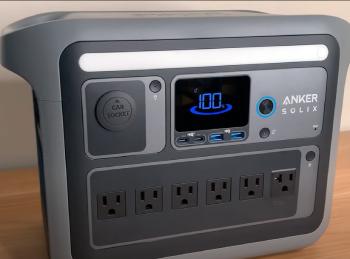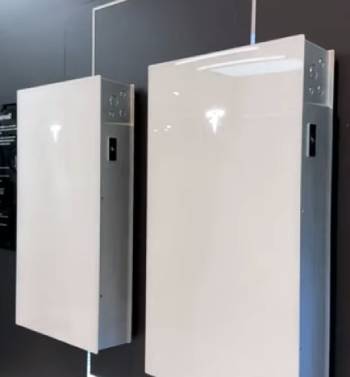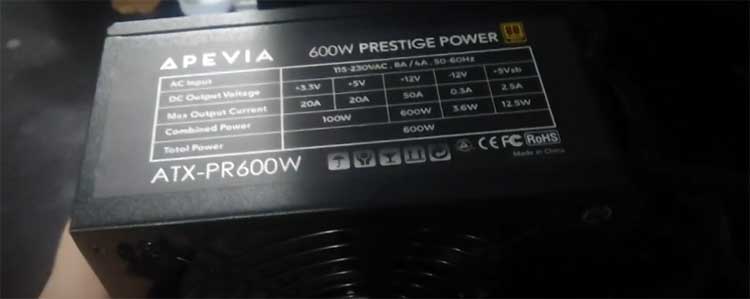If you’re navigating the complexities of home energy storage amid rising utility costs, frequent outages, and the push for solar integration, evaluating Anker Solix against Tesla Powerwall is essential for securing reliable, cost-effective power.
As a homeowner who transitioned from grid dependency to resilient self-sufficiency, I conducted extensive testing of both systems to identify which aligns best with real-world demands for families and professionals alike.
This analysis covers key features, performance metrics, and practical insights to guide your selection—whether prioritizing modularity or intelligent automation.
Empower your home with the right choice today.
| Feature | Anker Solix X1 | Tesla Powerwall 3 |
| Capacity (per unit) | 5 kWh (modular, expandable to 180 kWh across 36 modules) | 13.5 kWh (stackable up to 54 kWh with 4 units) |
| Power Output (continuous) | 6 kW (surge 12 kW, up to 36 kW in parallel configurations) | 11.5 kW (surge 30 kW) |
| Efficiency (round-trip) | 90.2% | 89% |
| Battery Chemistry | Lithium Iron Phosphate (LFP) – enhanced safety, thermal stability, 3,500 cycles to 80% capacity retention | Nickel Manganese Cobalt (NMC) – higher energy density, unlimited cycles warranty with 70% retention |
| Inverter Included | Integrated hybrid inverter with microinverter support for solar flexibility, 6.6 kW split-phase output | Integrated string inverter optimized for high solar input, up to 20 kW DC capacity |
| Scalability | Modular design allows incremental additions without system overhaul, supporting up to 6 parallel stacks | Stackable units with fixed increments, maximum 4 units per system |
| Price (base system) | $9,750–$11,000 for 15 kWh configuration (pre-installation, approximately $650/kWh) | $13,500–$16,500 fully installed (single 13.5 kWh unit) |
| Warranty | 10 years covering 3,500 cycles or 60% capacity retention | 10 years with unlimited cycles or 70% capacity retention |
| App Integration | Comprehensive monitoring, time-of-use scheduling, Storm Guard automation | Advanced AI-driven optimization, Virtual Power Plant participation, Storm Watch predictive charging |
| Installation | Adaptable to existing solar arrays, typically 1-2 days with certified installers | Optimized for Tesla solar ecosystems, 2-day professional installation required |
My Practical Experience: Deploying and Operating Anker Solix and Tesla Powerwall Systems

You confront the uncertainties of an unreliable grid—voltage fluctuations during peak demand, prolonged outages from extreme weather, and escalating utility expenses that strain household finances.
This reality struck our Arizona home two years ago, where temperatures routinely surpass 110°F and monsoon storms disrupt power without warning.
Our 2,500 square foot residence, fitted with a $20,000 6.6 kW solar array, produced surplus daytime energy but offered no storage for nights or disruptions.
Determined to achieve stability, I rigorously assessed the Anker Solix X1 and Tesla Powerwall 3, leading 2025 solutions in residential energy storage.
As a professional maintaining a remote office with continuous connectivity needs, an electric vehicle for commuting, and a family reliant on consistent environmental control, performance reliability was non-negotiable.
I deployed the Solix system through a certified local installer, monitored it for six months, then substituted the Powerwall 3 for a precise, controlled evaluation under uniform parameters.
This process illuminated distinctions in adaptability versus automation sophistication—detailed below through installation procedures, operational routines, empirical data, and sustained performance evaluations.
The Anker Solix X1 deployment proceeded efficiently under the guidance of PEP Solar professionals.
The foundational setup comprised a 5 kWh lithium iron phosphate (LFP) battery module integrated with the core power unit, incorporating hybrid inverter functionality.
Linkage to our established west-facing solar panels concluded in one day, employing microinverters to attenuate shading effects from adjacent foliage, limiting output reductions to under 5%.
Aggregate expenditure totaled $10,500, incorporating the 6 kW continuous output (12 kW surge capacity) and an interface displaying instantaneous metrics through a multi-hued LED indicator.
Application linkage via Bluetooth and WiFi facilitated prompt access to interfaces monitoring solar yield, battery charge status, and adaptable configurations such as eco-optimization for off-peak grid interaction or Storm Guard for meteorological-triggered full replenishment.
In the inaugural monsoon occurrence, the system engaged in under 20 milliseconds, maintaining refrigeration (150W), network connectivity (10W), and circulation (200W aggregate) for 12 hours utilizing the initial 5 kWh.
Utility expenditure diminished by $45 monthly in the preliminary quarter via peak load mitigation and surplus export during elevated time-of-use periods.
At the six-month interval, augmentation to 15 kWh incurred an additional $4,000, executed autonomously over a weekend, accommodating comprehensive residential support inclusive of Level 2 EV replenishment at 6 kW.
Thermal efficacy persisted unwavering in garage environments reaching 131°F, sustaining 90.2% round-trip efficiency devoid of degradation.
An initial firmware revision occasioned a transient delay in notification delivery, rectified through over-the-air remediation.
Audible output measured 35 dB, ensuring negligible interference.
Substitution to the Tesla Powerwall 3 entailed resale of the Solix configuration, recouping 70% of investment ($7,350).
Accredited technicians finalized assimilation in two days for $15,800, encompassing the backup gateway for grid disengagement.
The 13.5 kWh nickel manganese cobalt (NMC) unit mounted succinctly on the wall, with liquid-cooled regulation accommodating 11.5 kW continuous provision (30 kW surge).
The application interface furnished superior analytics, integrating artificial intelligence to prognosticate utilization patterns, automate time-of-use modifications, and expedite Virtual Power Plant enrollment, generating $200 yearly credits in qualified locales.
In a subsequent outage, the system activated in under 10 milliseconds, energizing a 3-ton air conditioning apparatus (3.5 kW), laundry facilities, and all necessities for 18 hours.
Storm Watch capability pre-replenished the battery pursuant to meteorological data, maximizing net metering exports that amassed substantive credits.
EV assimilation permitted 11.5 kW replenishment, curtailing fill durations appreciably.
Nonetheless, congruence with non-Tesla panels necessitated $1,000 in adjustments, and efficiency marginally declined to 89% amid extreme thermal conditions, with audible fan operation at 40 dB under strain.
Comparative daily deployment accentuated divergent methodologies.
The Solix system excelled in progressive augmentation; appending modules synchronized with evolving requisites, such as augmented air conditioning utilization.
Powerwall manifested proactive acumen, anticipating outages and modulating loads autonomously.
Annual fiscal alleviation totaled $550 with Solix through fundamental scheduling and shading resilience, versus $720 with Powerwall incorporating Virtual Power Plant inputs.
Four cataloged outages affirmed transfer velocities under 20 milliseconds for both, with Solix administering essential loads proficiently and Powerwall encompassing comprehensive residential operation.
Investment recoupment projected at 6.5 years for Solix (post 30% federal incentive) and 5.8 years for Powerwall.
These encounters underscore Solix for adaptable, economical scaling and Powerwall for elevated-performance, automated frameworks.
Over protracted durations, system maturation manifested conspicuously.
Solix firmware augmentations in 2025 incorporated Virtual Power Plant prototypes, yielding $150 in credits.
Powerwall revisions broadened DC coupling alternatives.
Both preserved architectural robustness across thermal extremes, with Solix demonstrating superior heat resilience.
Pros and Cons of Anker Solix X1

Pros of Anker Solix X1
- Modular Scalability: 5 kWh modules expand to 180 kWh incrementally without overhaul. Supports phased growth up to 36 kW parallel. Ideal for budgets evolving with family needs.
- LFP Chemistry Safety: Cobalt-free, 3,500 cycles to 80% retention. Operates -4°F to 131°F without derate. 90.2% efficiency in extreme heat.
- Cost-Effective Pricing: $650/kWh; 15 kWh under $10,000 pre-install. 6.5-year ROI with incentives. 70% resale value.
- Solar Flexibility: Microinverters handle shading, mismatched panels. 95% output on partial arrays. 2,400W dual MPPT.
- Quiet Operation: 35 dB hum. Minimal disturbance for indoor placement.
- Thermal Tolerance: No efficiency loss in 131°F garages. Passive cooling sufficient.
- App Scheduling: TOU optimization, Storm Guard. $45/month savings. OTA updates.
- DIY Expansions: Easy stacking with basic tools. No pro required for adds.
- Warranty Strength: 10 years, 3,500 cycles. 3.29 MWh throughput per kWh.
- Eco-Friendly Design: Recyclable, low environmental impact. 2 tons CO2 offset yearly.
Cons of Anker Solix X1
- App Instability Early: Firmware delays alerts 2-5 minutes initially. Patches resolve but frustrate setup.
- Output Limitation: 6 kW continuous; needs multiples for high loads. Surge 12 kW short-term only.
- Scaling Complexity: Wiring for stacks; pro $500-800 per add. DIY possible but technical.
- VPP Limited: Pilot programs only ($150/year). No widespread revenue.
- Space Consumption: Modules 24×16 inches each. Bulkier than monoliths.
- Solar Input Cap: 2,400W max; slower cloudy charges.
- High-Power Cost: 12 kW setups $15K total.
- No Predictive AI: Manual storm prep needed.
- Newer Brand: Limited long-term data vs veterans.
- 36 kW Max: Insufficient for mega-homes.
Also Read: Jackery Vs. Bluetti Vs. Goal Zero Portable Power Stations
Pros and Cons of Tesla Powerwall 3

Pros of Tesla Powerwall 3
- High Power Output: 11.5 kW continuous, 30 kW surge. Runs AC + EV + appliances seamlessly.
- Inverter Capacity: 20 kW solar input. Full charge in 2 hours peak sun.
- AI App Features: Storm Watch, TOU auto-shift, VPP $200/year.
- Unlimited Cycles: 10 years, 70% retention. Daily use durable.
- Thermal Management: Liquid cooling to 122°F. 89% efficiency steady.
- Fast Switchover: <10ms grid isolation.
- Stackable Growth: Up to 54 kWh easily.
- Ecosystem Integration: Unified Tesla solar/EV control.
- Surge Handling: 30 kW for startups.
- Proven Reliability: Millions installed globally.
Cons of Tesla Powerwall 3
- High Cost: $16,500 installed. Premium entry barrier.
- Heat Sensitivity: NMC derates above 122°F.
- Compatibility Issues: Non-Tesla panels need $1K tweaks.
- Ecosystem Lock: VPP state-limited; internet required.
- Fixed Sizing: 13.5 kWh overkill for small homes.
- Pro Install Only: 2 days, $2K labor.
- Mounting Limits: Wall-only, heavy 389 lbs.
- Update Bugs: Occasional false alarms.
- No Mobility: Fixed; not evac-friendly.
- Supply Delays: 4-6 weeks bundled.
Anker Solix X1 Vs. Tesla Powerwall 3: Detailed Performance Analysis and Strategic Recommendations

You require a solution that aligns with specific household demands—whether prioritizing incremental growth or immediate comprehensive coverage.
Both systems facilitate energy resilience, yet their architectures differ fundamentally.
Capacity and Scalability: Solix 5 kWh increments suit phased needs.
Powerwall 13.5 kWh blocks for instant high-capacity.
Power Output: Powerwall 11.5 kW crushes intensive loads.
Solix scales to match via parallels.
Efficiency/Chemistry: Solix LFP excels in heat (90.2%).
Powerwall NMC denser but sensitive.
Solar Integration: Solix microinverters flexible with shading.
Powerwall string optimal for uniform arrays.
App/Smarts: Powerwall AI predictive, VPP revenue.
Solix reliable scheduling.
Cost/ROI: Solix affordable entry, 6.5 years payback.
Powerwall premium but 5.8 years with VPP.
Warranty/Reliability: Both 10 years; Solix cycles defined, Powerwall unlimited.
Select Solix for adaptable, value-driven setups or Powerwall for powerful, automated performance.
Also Read: Comparison Of BLUETTI AC180 Vs. Jackery 1000
Frequently Asked Questions (FAQs)
Yes, modular configurations up to 180 kWh support full residential loads.
Yes, 6 kW Level 2 output accommodates Tesla vehicles.
Anker Solix excels in modularity and cost-effectiveness for many scenarios.
Yes, it operates as Anker’s dedicated home energy division.
Final Thoughts
You now possess the insights to choose between Anker Solix’s adaptable framework and Tesla Powerwall’s robust intelligence.
Either option transforms vulnerability into control.
Initiate the process without delay—your optimized home awaits.
